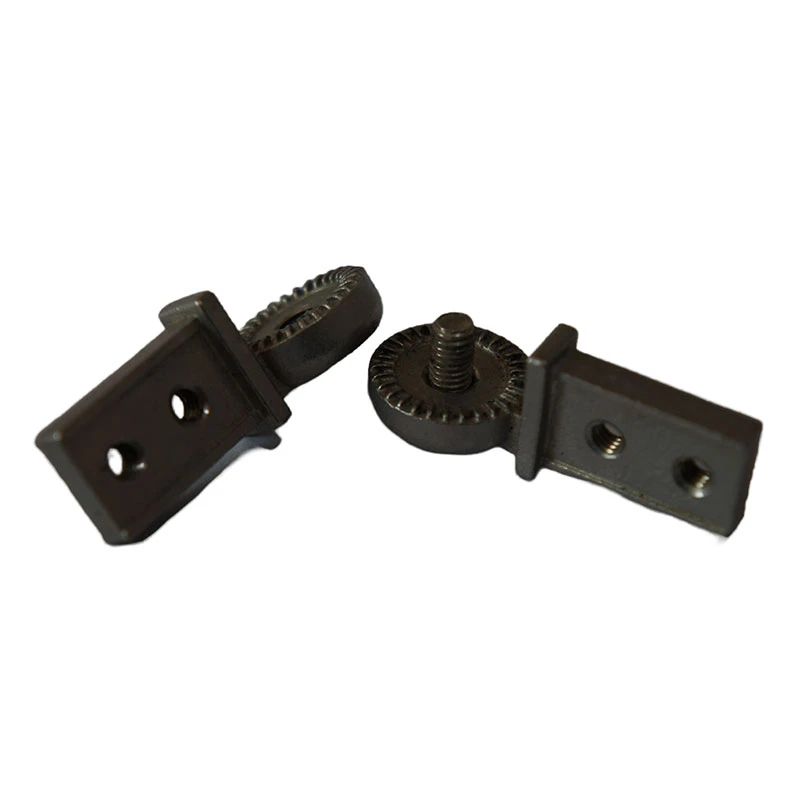precision casting solutions
Precision Casting Solutions Advancing the Future of Manufacturing
In the realm of modern manufacturing, precision casting stands out as a vital process, enabling the creation of intricate components with exceptional accuracy. Precision casting solutions are pivotal in various industries, including aerospace, automotive, medical, and energy, where the demand for high-quality parts is relentless. This article explores the significance of precision casting, the techniques involved, its benefits, and the future of this essential manufacturing process.
Understanding Precision Casting
Precision casting, often referred to as investment casting or lost-wax casting, is a manufacturing process that involves creating a precise mold from a wax pattern. The wax is melted away, leaving a cavity into which molten metal is poured. This method allows manufacturers to produce parts with complex geometries and tight tolerances that would be challenging to achieve through traditional machining techniques.
The precision casting process begins with the creation of a detailed wax model, which is coated in a ceramic material to form a shell. Once the shell hardens, the wax is melted out, resulting in a hollow mold. The molten metal is then poured into this mold. After the metal cools and solidifies, the ceramic shell is broken away, revealing the final product. This process can yield a very smooth surface finish and reduce the need for extensive machining.
Advantages of Precision Casting
1. Intricate Designs One of the most significant advantages of precision casting solutions is their ability to create complex shapes that are often impossible or cost-prohibitive to produce using other methods. This capability opens doors for innovative designs across various industries.
2. Dimensional Accuracy Precision casting provides exceptional dimensional accuracy, enabling manufacturers to produce components that can fit together seamlessly. This is crucial in applications where parts must work in harmony, such as in engines or complex machinery.
3. Material Versatility The process supports a wide range of materials, including steels, alloys, and non-ferrous metals. This versatility allows manufacturers to select the most suitable material for their specific application, enhancing performance and durability.
4. Reduced Waste Compared to traditional manufacturing methods, precision casting minimizes material waste. The process can produce near-net-shape parts, reducing the need for additional machining, which in turn lowers manufacturing costs and enhances sustainability.
precision casting solutions

5. Enhanced Strength Components produced through precision casting often exhibit superior mechanical properties. The casting process can result in a finer grain structure, leading to increased strength and durability, making them suitable for high-performance applications.
Applications Across Industries
Precision casting solutions have a wide range of applications across various industries. In the aerospace sector, for instance, precision-cast components are used extensively in engines and structural elements, where weight savings and reliability are paramount. The automotive industry benefits similarly, with precision casting used to manufacture engine blocks, transmission cases, and other critical components that require high precision.
In the medical field, precision casting is employed to create surgical instruments, implants, and prosthetic devices that must meet stringent quality and performance standards. Additionally, the energy sector relies on precision-cast parts for turbines, valves, and other equipment subject to extreme conditions.
Future Trends in Precision Casting
As technology continues to advance, the future of precision casting looks promising. The integration of automation and robotics is expected to enhance production efficiency and reduce lead times. Moreover, the incorporation of advanced software for simulation and design optimization will streamline the casting process and improve outcomes.
Additive manufacturing technologies, such as 3D printing, are also making their mark on the industry. By allowing for the rapid prototyping of patterns and molds, these technologies can significantly speed up the development of new products and reduce the costs associated with tooling modifications.
Conclusion
In conclusion, precision casting solutions play an integral role in modern manufacturing, offering a unique combination of flexibility, accuracy, and efficiency. As industries continue to evolve and demand more complex and high-quality components, the significance of precision casting will only grow. By embracing new technologies and innovations, manufacturers can ensure they remain at the forefront of this essential field, driving advancements that will shape the future of production and design.
-
Precision Sheet Metal Stamping Manufacturer | Fast & ReliableNewsAug.01,2025
-
OEM Sand Cast Pump Valve Fittings - Baoding Hairun Machinery And Equipment Trading Co., Ltd.NewsAug.01,2025
-
Custom OEM Impellers | High Efficiency & PrecisionNewsAug.01,2025
-
OEM Sand Cast Pump Valve Fittings - Baoding Hairun Machinery | Customization, Quality AssuranceNewsAug.01,2025
-
OEM Sand Cast Pump Valve Fittings - Baoding Hairun Machinery And Equipment Trading Co., Ltd.NewsAug.01,2025
-
OEM Sand Cast Pump Valve Fittings - Baoding Hairun Machinery And Equipment Trading Co., Ltd.NewsJul.31,2025















